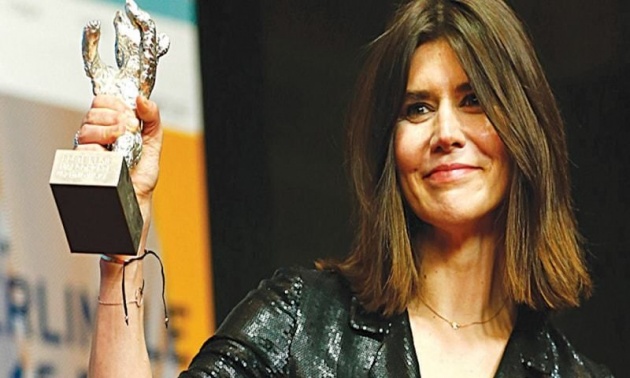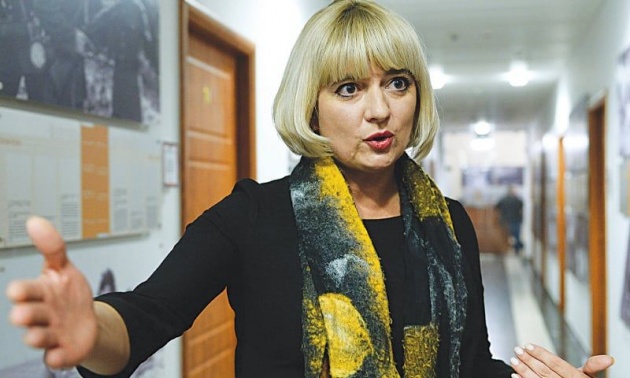
WARSAW: An Oscar in Hollywood, a Silver Bear in Berlin and a public that is returning to theatres in droves after more than a few dismal years: Polish cinema is back.
The revival comes in large measure thanks to a savvy system of film financing forged a decade ago to capitalise on the explosive growth of Poland’s audio-visual market after communism’s demise.
“While receiving the Silver Bear, I thought to myself that we’re witnessing a great era in Polish cinema,” said 42-year-old Polish director Malgorzata Szumowska, known for her film Elles starring Juliette Binoche.
She received the award for Body, the story of a Warsaw widower and his anorexic daughter who seek the help of a therapist who believes she can communicate with the dead.
It was the third Silver Bear win in the history of Polish cinema, after those won by directors Krzysztof Kieslowski and Roman Polanski, in 1994 and 2010 respectively.
Then, a week later, the Oscar award for best foreign language film went to director Pawel Pawlikowski’s Ida, eliciting fanfare across the country.
The stark black-and-white production tells the tale of a young woman in 1960s communist Poland who finds out that she is Jewish just as she is about to take her vows at a Catholic convent.
The film scored well at the box office in France and the United States, with half a million tickets sold in each. At home, where the film triggered heated debate, some 215,000 people turned out to see it.
But there is more: fellow Polish director Maciej Sobieszczanski won a special award at Berlin for Performer. Poles also earned three other Oscar nominations this year and dozens of prizes at festivals around the world.
WARSAW: An Oscar in Hollywood, a Silver Bear in Berlin and a public that is returning to theatres in droves after more than a few dismal years: Polish cinema is back.
The revival comes in large measure thanks to a savvy system of film financing forged a decade ago to capitalise on the explosive growth of Poland’s audio-visual market after communism’s demise.
“While receiving the Silver Bear, I thought to myself that we’re witnessing a great era in Polish cinema,” said 42-year-old Polish director Malgorzata Szumowska, known for her film Elles starring Juliette Binoche.
She received the award for Body, the story of a Warsaw widower and his anorexic daughter who seek the help of a therapist who believes she can communicate with the dead.
It was the third Silver Bear win in the history of Polish cinema, after those won by directors Krzysztof Kieslowski and Roman Polanski, in 1994 and 2010 respectively.
Then, a week later, the Oscar award for best foreign language film went to director Pawel Pawlikowski’s Ida, eliciting fanfare across the country.
The stark black-and-white production tells the tale of a young woman in 1960s communist Poland who finds out that she is Jewish just as she is about to take her vows at a Catholic convent.
The film scored well at the box office in France and the United States, with half a million tickets sold in each. At home, where the film triggered heated debate, some 215,000 people turned out to see it.
But there is more: fellow Polish director Maciej Sobieszczanski won a special award at Berlin for Performer. Poles also earned three other Oscar nominations this year and dozens of prizes at festivals around the world.
|
HEAD of the Polish Film Institute Agnieszka Odorowicz.—AFP
|
‘A lost generation’
“With our return to freedom in 1989, state-funded cinematography dried up,” veteran Polish director Andrzej Wajda said, referring to the fall of communism.
“Polish film-making plunged into crisis ... and now we’re witnessing its renaissance,” the 88-year-old, who has four Oscar nominations under his belt, added after Ida’s win.
The crisis lasted almost two decades. Wajda himself and others who shot to fame in the 1960s-1980s, like Kieslowski or Krzysztof Zanussi — all alumni of the renowned Lodz Film School in central Poland — were unable to adapt to the new realities.
After 1989, young directors had their hands tied for lack of a viable system of financing film. Many turned to shooting advertisements or television series.
“Back then, you’d earn more for producing an ad than a feature film,” said Agnieszka Odorowicz, head of the Polish Film Institute (PISF).
“The generation that was getting its start then got pulled into the market economy. It’s a lost generation in terms of cinema,” she said.
PISF is the financing motor behind the newfound success of Polish cinema.
It was created in 2005 and was in large part inspired by its French counterpart.
The industry’s major players contribute an average of 1.5 per cent of their earnings to the PISF budget. As such, the institute has between 35 to 40 million euros ($38 million to $43 million) a year to invest in films, as well as education and the revamp of small cinemas.
“Today, we have one of the best systems of financing film in Europe,” said Szumowska, of PISF’s market-driven success.
Boring no more
PISF’s focus is on new talent.
“It is much easier for a young director to start out in Poland than in France, where the system is really patriarchal,” said Rafael Lewandowski, a 44-year-old Franco-Polish director.
“Since its founding, PISF has funded more than 130 debut films,” said Odorowicz. The public has followed suit.
After 1989, the term “Polish film” had taken on an ironic connotation, becoming synonymous with a boring, poorly shot pictures with little artistic value. No wonder the country’s cinemas remained empty.
But over the last five or six years, Polish films have proved a success with the public at home.
“In 2005, when PISF was created, Polish films drew some 700,000 moviegoers, or less than two per cent of the public,” said Odorowicz.
Last year, that number was up to 11 million moviegoers, or around 27.5 per cent of the public.
Lewandowski is optimistic about the future of Polish cinema.
“You have these real individuals who have the courage to speak with their own voice, even if it means not pleasing everyone,” he said.
“Poland is a gold mine — and still completely under-exploited — of unusual topics and characters.”



